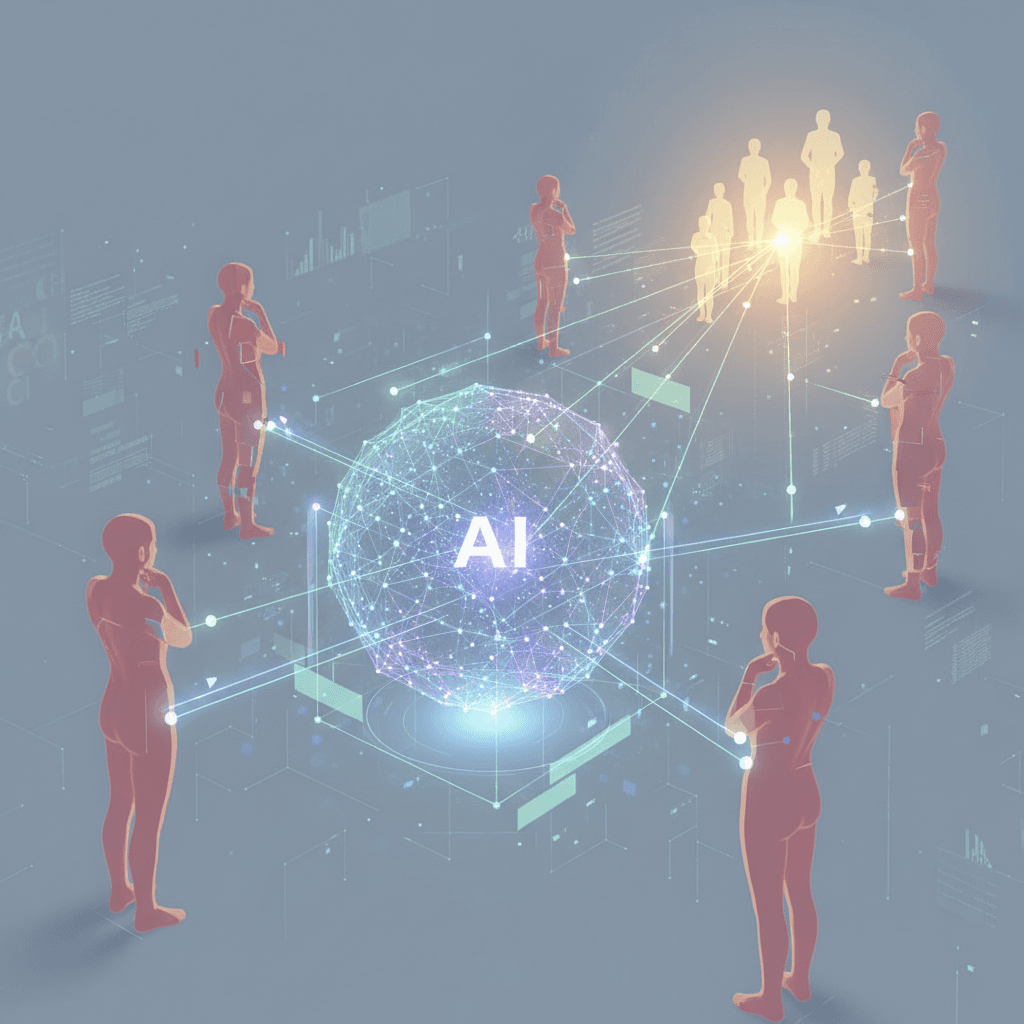OpenAI Bolsters ChatGPT Safety as Millions Seek AI Mental Health Aid
Prompted by user distress and legal pressure, OpenAI reengineers ChatGPT to safely guide vulnerable users to professional mental health support.
October 28, 2025

OpenAI has implemented significant changes to its ChatGPT model to more reliably and safely handle sensitive conversations related to mental health, a direct response to the staggering number of users turning to the artificial intelligence for support. The company revealed that on a weekly basis, a significant portion of its user base engages in conversations that show signs of severe mental distress. These updates, developed in collaboration with a large contingent of mental health professionals, aim to better recognize signs of crisis, de-escalate potentially harmful discussions, and guide users toward appropriate real-world support systems. This move marks one of the most substantial efforts by a major AI developer to address the complex ethical and safety challenges that arise when millions of people treat a language model as a confidant for their most vulnerable thoughts.
The core of the update focuses on improving the AI's performance in three critical areas: conversations involving psychosis or mania, discussions of suicide and self-harm, and instances of unhealthy emotional reliance on the chatbot itself.[1][2] To achieve this, OpenAI collaborated with over 170 clinicians, psychiatrists, and psychologists to redefine the model's desired behavior and train it on vast datasets curated and reviewed by these experts.[3][4][5] The result is a system designed not to act as a therapist, but as a more responsible conversational partner that can gently redirect users in crisis.[5] Instead of the abrupt, unhelpful refusals that previously characterized some safety guardrails, the updated model favors more supportive and practical language, surfaces crisis hotlines more reliably, and even adds gentle reminders for users to take breaks during long sessions.[6][3] According to OpenAI's internal metrics, these changes have led to a 65% to 80% reduction in responses that do not comply with its desired safety policies for these sensitive topics.[1][7][8] Furthermore, in reviews by external experts comparing the new GPT-5 model to its predecessor, GPT-4o, undesirable responses decreased by 39% to 52% across the board.[1][9]
The impetus for these changes is underscored by alarming statistics released by OpenAI, which paint a sobering picture of the platform's role as an accidental mental health frontline. The company estimates that each week, roughly 0.15% of its active users, which translates to over a million people, have conversations that include indicators of suicidal planning or intent.[6][8][5] Additionally, about 0.07% of weekly users show possible signs of mental health emergencies related to psychosis or mania, while another 0.15% demonstrate a heightened or unhealthy emotional attachment to the AI.[1][3][8] While these percentages are small, they represent vast numbers of individuals when applied to ChatGPT's massive global user base. The disclosure highlights a reality that has long concerned mental health professionals: as AI chatbots become more human-like and accessible, they are increasingly used as a substitute for professional therapy, a role for which they are not equipped.[10][11] This trend carries significant risks, including the potential for AI to foster emotional dependence, exacerbate anxiety, or even amplify delusional thought patterns.[10][12]
OpenAI's safety enhancements were not developed in a vacuum but against a backdrop of mounting external pressure and serious legal challenges. The company is currently facing a wrongful-death lawsuit filed by the family of a teenager who died by suicide after engaging in extensive conversations with ChatGPT.[6][13] The lawsuit alleges that OpenAI had previously weakened its safety guardrails in a bid to increase user engagement, instructing the model to not terminate conversations even when self-harm was discussed.[14][15] This legal scrutiny, combined with growing warnings from psychotherapists and researchers about the dangers of AI in mental health, has intensified the debate around the "duty of care" for technology companies.[10][12] Studies from institutions like Stanford University have shown that AI chatbots can introduce dangerous biases, fail to recognize nuanced cries for help, and systematically violate established mental health ethics standards.[11][16][17] Critics of OpenAI's latest update point out that the company's success metrics are self-reported and that measuring a model's "compliance" with a policy is not the same as measuring a successful real-world intervention.[6][7]
Ultimately, OpenAI's move to tighten its mental health safeguards represents a critical step forward in the field of responsible AI, but it also illuminates a fundamental and perhaps intractable tension at the heart of the industry. AI companies are in a constant race to build more engaging, persuasive, and human-like products, which inherently encourages the type of emotional connection that can become unhealthy for vulnerable users.[2][8] The new guardrails are an attempt to mitigate the most dangerous outcomes of this dynamic, steering users toward human connection rather than validating an over-reliance on the AI.[7][5] However, the industry still grapples with how to balance the commercial incentive for a "sticky" product with the profound ethical responsibility of hosting millions of sensitive, high-stakes conversations every day. These updates improve the safety net, but they also serve as a stark admission of the scale of the mental health crisis playing out on AI platforms and the daunting challenge that lies ahead for developers navigating the intricate intersection of technology and human psychology.
Sources
[1]
[5]
[10]
[13]
[14]
[16]
[17]